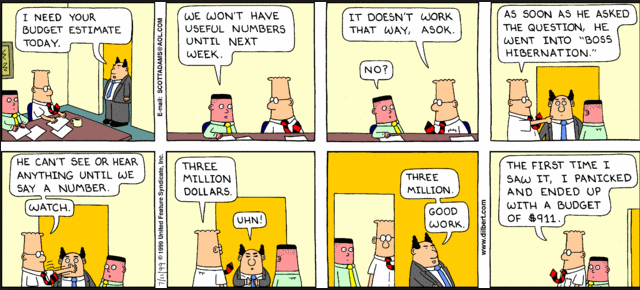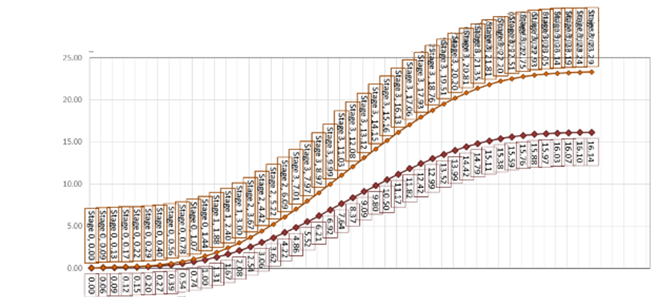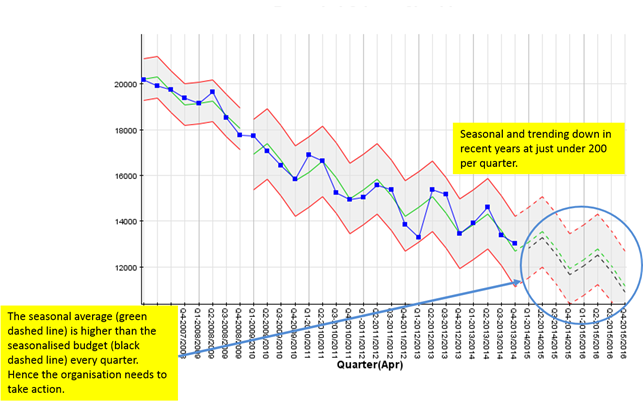Beyond Budgeting… A journey towards real customer service – Part 2 / 2
27/07/2017


Last week, we introduced the idea of Beyond Budgeting and how it chimes with our work with Cranfield on “A Systems Approach to Project Management”. It challenges the current standard practice of setting rigid budgets on an annual (or longer term) basis and then tracking variance from budget month by month.
This may seem scary for some finance types, but there are many advantages of adopting the approach promoted by the Beyond Budgeting Institute (www.bbrt.org). Some global organisations are adopting this approach and doing very well thank you – e.g. Handelsbanken, Maersk, Lego, E&Y and many others……
So, if not tracking results and their variance from budget on a monthly basis, what’s the alternative?
The answer is to first consider if monthly is the right timeframe – surely this should be determined by the nature of the business or the world-system at hand, and any contextual changes in the markets or communities they serve. For example, retail may require daily assessment, whereas ship-building might require monthly…
Second, can you get data about what peers are achieving, and then position your results against this group? In essence you’re creating a “reference class” of results which will give you an envelope centred around an average which you can then compare your results against. It might be projected spend over the next two years, with a “lazy S” profile. If the spend at each review period is not outside the envelope, don’t get excited!

Third, and along with this, you might want to use extended-SPC techniques to track whether the patterns and trends are “in the right direction”. Below, you might be tracking costs or spend which you may be wanting to bring down by approx. 15% over the next year. By looking at your previous actual costs/spend profile up until Q4 2013/14 (the envelope between the upper and lower red guidelines), you can project this forwards (dashed lines) and superimpose the seasonalised required budget reduction (dashed black line) and look at the likelihood of achieving the reduction going forwards.

By looking at the evidence (the data) in this way, organisations become energised around what action to take to move in the right direction going forwards, rather than looking backwards and trying to justify why some result differed from some arbitrary budget set some time in the distant past. It accepts that there is something called variation in the world, beyond the precise control of any one manager. Of course, until your seniors really understands real-world variation, they may well go into “boss hibernation” (or adopt the head-in-sand approach)!
Categories & Tags:
Leave a comment on this post:
You might also like…
Automotive Engineering: From student to hypercar innovation at Rimac
We sat down with recent graduate Thomas Perrin, to discuss how his year on the MSc in Automotive Engineering at Cranfield University propelled him from the lecture hall directly into the ...
What this year at Cranfield really meant to me
Every Cranfield journey is unique. In this alumni reflection, Zachea Scicluna shares what her year at Cranfield truly meant, from facing uncertainty to gaining hands-on experience in industry-backed projects. I’ve been reflecting (and delaying) ...
Preparing for assignments and exams?
Sorry! We know it seems a bit mean to mention the exams in January rather than looking forward to the break before it! However, we know many of you will be thinking about your forthcoming ...
Screening for FTSE 100 companies on Bloomberg
So you’re researching an index and need some data on its constituent companies? Bloomberg’s Equity Screening tool makes light work of this, not just for the FTSE, but for indices, exchanges and sectors worldwide. Type EQS ...
Accelerating my future: How Cranfield put me on the fast track to automotive safety innovation
Hello! I’m Michaela Kaiser, and I’m thrilled to share my journey studying abroad. I’m from Calgary, Canada, and I recently graduated from Cranfield’s MSc Automotive Engineering course. My path to Cranfield ...
From Myanmar to Cranfield: My path to Renewable Energy
As someone who is passionate about sustainability, my career goal is to build a path in the renewable energy sector. My aspirations comes from the benefits of developing sustainable energy sources and ensuring energy ...






